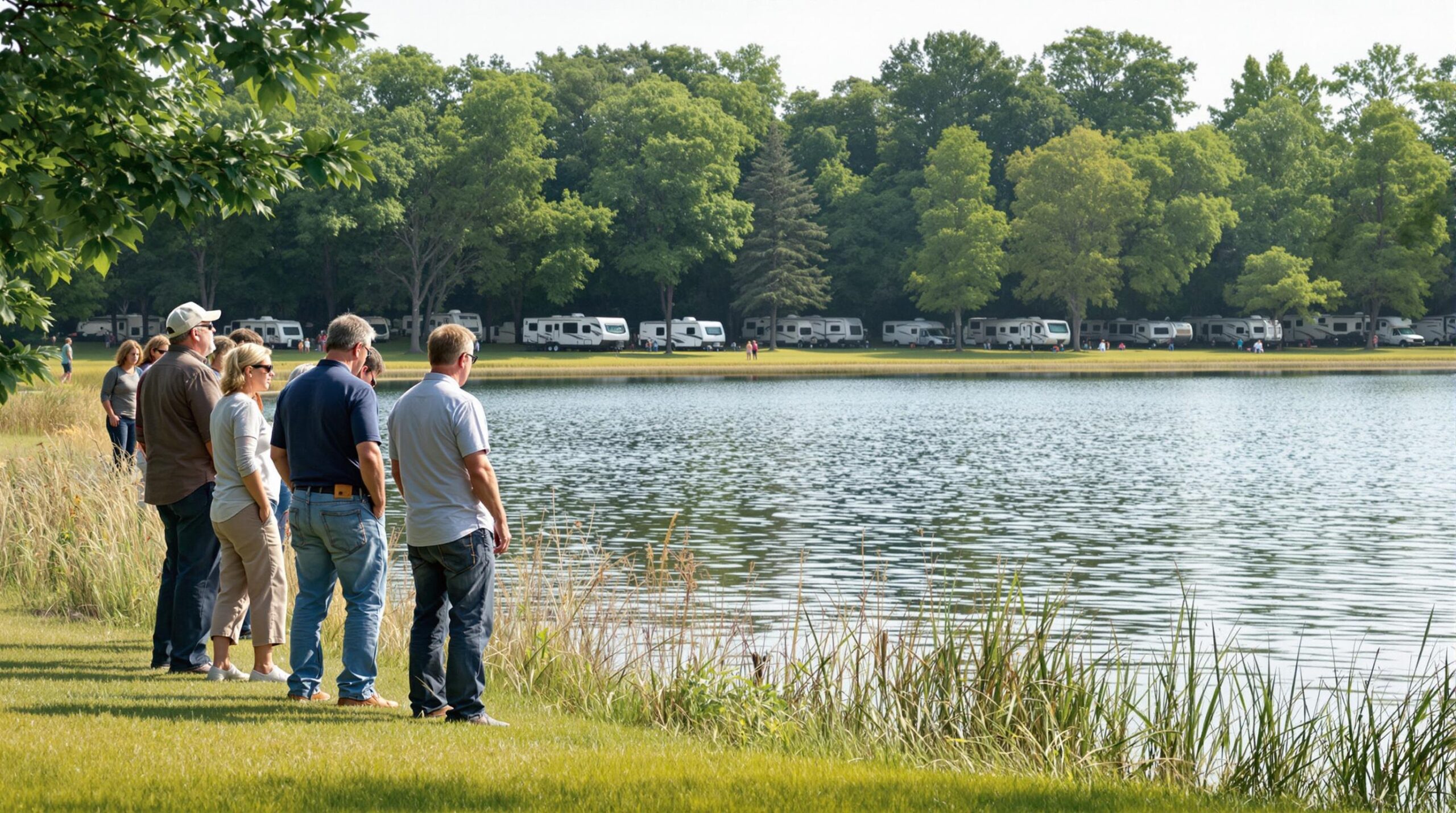Some community discussions suggest a proposal to expand an existing lakeside resort near Howard Lake in Cass County, Minnesota, to 41–47 units, though county zoning documents were not provided to confirm these figures. While local supporters of the plan see prospective benefits for tourism, many residents question whether the project’s scale is appropriate. They note that a 50% jump in population during peak season has been informally estimated, but no official data were available from county sources.
Local coverage highlighted concerns that the resort could intensify environmental pressures on a waterway recognized for special ecology. “Howard Lake has been designated as a lake of outstanding biological significance,” said resident Diane Ford. “So it has a lot of unique plants, animals, rare—this is a tullibee refuge lake as well. And so the impact of adding all that density and the boat traffic to the lake can impact those populations.” Some neighbors mention showy lady slipper plants, which are protected in Minnesota, though official records do not list them as endangered.
Others in the community suspect that additional boat activity and shoreline construction might disturb fish habitats and sensitive shoreline vegetation. Residents raising these issues have not cited specific peer-reviewed studies linking boat density to harm, but they believe a more robust environmental review could clarify whether sensitive species face any significant risks. For them, shoreline setbacks, responsible boating, and diligent lake monitoring may help preserve Howard Lake’s character.
Many outdoor hospitality developers often conduct aquatic ecosystem reviews early in the planning process, which can include water testing, fish habitat examinations, and close tracking of shore conditions. According to a recognized lake health study, installing permeable surfaces and creating native vegetation buffers along shorelines can reduce erosion by a measurable percentage and significantly improve water quality. Such measures are frequently mentioned as protective steps to maintain delicate ecosystems in lakes like Howard.
At the same time, there is debate over how existing county ordinances handle water-focused assessments. “Our county ordinances don’t ever factor the impact to the lake. They really only look at land,” said Diane Ford. She also noted, “And so we’ve tried to look at other states, other counties across Minnesota that actually have lake characteristics as part of their density calculations, and we haven’t found any.” No formal statewide verification of this statement was available, and it remains unclear if other counties have implemented comprehensive lake-based planning practices.
Local news sources have described a planning commission session that ended in a tie vote on whether to require an environmental impact statement, although official meeting minutes from the Cass County Clerk’s office were not provided. A separate broadcast also reported that a new vote on commissioning further environmental studies is tentatively set for April 14 at the Cass County Land Services Building in Backus, but that date was not confirmed by county officials at the time of publication.
Some residents say the community collected more than 350 petition signatures expressing disapproval of the development in its current form. However, the actual petitions and precise figures were not independently reviewed. The group raising these concerns insists that pushing for an extensive study would illustrate whether the plan can be accommodated without endangering aquatic habitats.
Several homeowners argue that additional summer visitors will not solve business slowdowns during the off-season. “Right now, I think the way it’s set up is being taken advantage of by developers, and of course it’s all about making money,” said David Ford, whose view reflects a belief that peak months are already crowded. “Where there’s need for more people is in the winter, when all these businesses that are here to be here for the summer months, they’re trying to keep enough business in the winter to survive. And a lot of businesses close down. They really struggle.” He offered this as personal insight, rather than referencing specific occupancy data.
Many observers note that adding winter or off-season amenities—such as heated camping units—can help generate revenue even when temperatures drop. An industry survey suggests that offering such features can increase year-round visitor numbers and drive up local business income by a verifiable margin, giving communities a stronger economic base throughout the year. Local merchants often welcome a more sustained flow of customers who can help offset slow months.
Employees at similarly positioned properties sometimes undergo cross-training to keep limited services available during quieter periods, enabling a quick response if off-peak visitors do arrive. While not attributed to any specific agency, this approach has gained traction with resort owners seeking to maintain steadier hiring and operational schedules. Residents near Howard Lake see these strategies as a possible way to align developer goals with local interests.
Community members concerned about year-round viability often point to creating cold-weather amenities to attract customers beyond the typical summer season. Suggestions include indoor gathering areas and organized seasonal activities, aiming to spread economic support more consistently across the calendar. Proponents of these concepts believe that smarter scheduling and infrastructure investments could improve the area’s livelihood without overwhelming it during mild-weather weeks.
Howard Lake’s residents remain divided on how best to protect the site’s stability as tourism grows. They seek ways to ensure that a more crowded shoreline does not come at the expense of sensitive fish species or protected plants thriving in the region. Efforts to fill knowledge gaps—through independent research or an official impact review—continue to fuel discussions about balancing development aspirations with environmental stewardship.
Meanwhile, the path forward hinges on further action from Cass County officials, who have not yet announced a final decision. Nevada-based resort owners have not publicly commented on potential modifications to their plans, and the question of long-term environmental protections remains open. Despite differing views, the Howard Lake debate illustrates the complexity of engineering outdoor recreational growth that also respects unique ecosystems—and how better coordination can bridge community objectives with economic opportunity.


